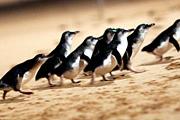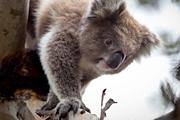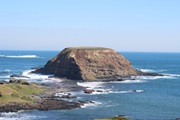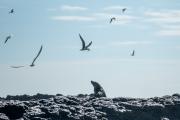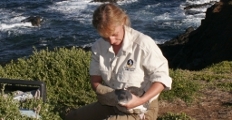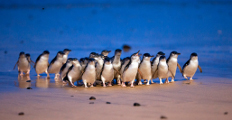Strong El Nino event results in breeding success of little penguins
Phillip Island’s little penguin population has overcome the environmental odds of a strong El Nino event, with higher than expected number of fledgling chicks this breeding season.
Phillip Island Nature Parks researchers say the longer breeding season, which ran from July 2023 until the end of March 2024, was marked by a strong El Nino event that impacted global weather, with ocean temperatures surging to unprecedented levels.
But despite predictions that penguin populations would suffer in the warming world and the ocean temperatures around Phillip Island registering record highs, our little penguins flourished, with two successful clutches in one season.
Phillip Island Nature Parks Senior Scientist Professor Andre Chiaradia said the island’s little penguins had benefitted from a longer than normal breeding season that ran for nine months rather than the usual three to four months.
“El Nino changes the weather pattern of the whole planet. Wildfires in the Northern Hemisphere, record ocean temperatures and floods – they are all linked to a strong El Nino,” Professor Chiaradia said.
“For the penguins here on Phillip Island, it means more storms, mixing ocean waters and less availability of food.
“Initially we were concerned about the predicted strong El Nino, which can result in heatwaves and penguin mortality, as well as challenging foraging conditions due to storms and poor breeding success.
“At the beginning of the season, penguins experienced difficulties foraging as they were travelling longer distances for food, reducing their visits ashore and causing food shortages for chicks.
“But remarkably, in a surprising turn, the Penguin Parade witnessed a significant upturn in later summer, exceeding initial expectations as most chicks from the second clutch successfully fledged. The average weight of penguins crossing the beach also exceeded the long-term average, indicating a positive trend.
“It seems food became available closer to Phillip Island, so penguins took advantage of a second breeding attempt that was ultimately better than expected.”
He said little penguins had, in the past, travelled as far as Lakes Entrance to forage for food during a breeding season.
Many populations of little penguins are severely threatened by the fast-changing environment and human disturbances in both Australia and New Zealand.
Recently, more than 50 penguins died in South Australia. Their cause of death is still being investigated.
Sites without active conservation measures have experienced a severe decrease, where many known breeding colonies no longer exist.
Remarkably, some of these pressures can be locally offset by a wide range of conservation efforts, such as the case of the thriving at Phillip Island, having been recognised as the largest colony of little penguins in the world with a population of 40,000.
Professor Chiaradia said the work by researchers and oversight of the Nature Parks had also helped to protect and grow the population of little penguins at Phillip Island.
“The fine-scale monitoring of penguins at Phillip Island underlines the importance of ongoing surveillance and data collection to understand the intricate dynamics of penguin populations on land and at sea,” he said.
“This ongoing effort informs conservation strategies to safeguard these iconic penguins for future generations.”





